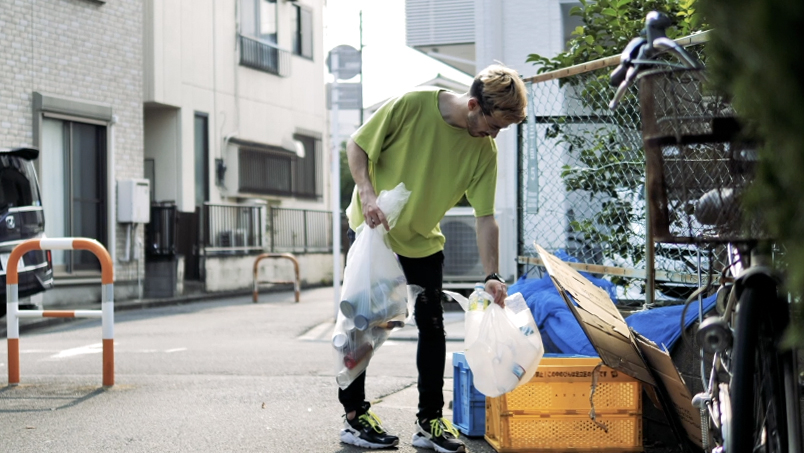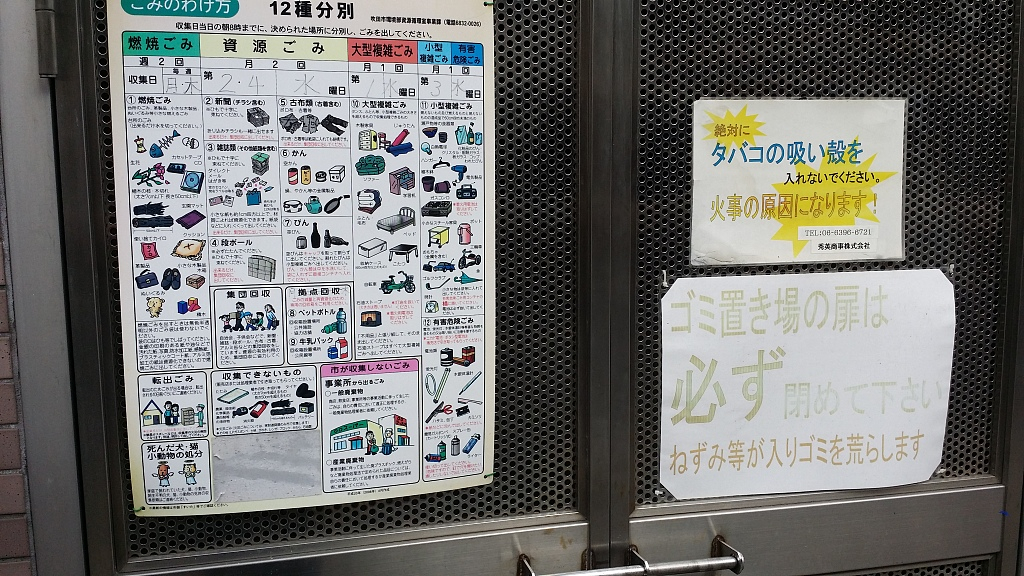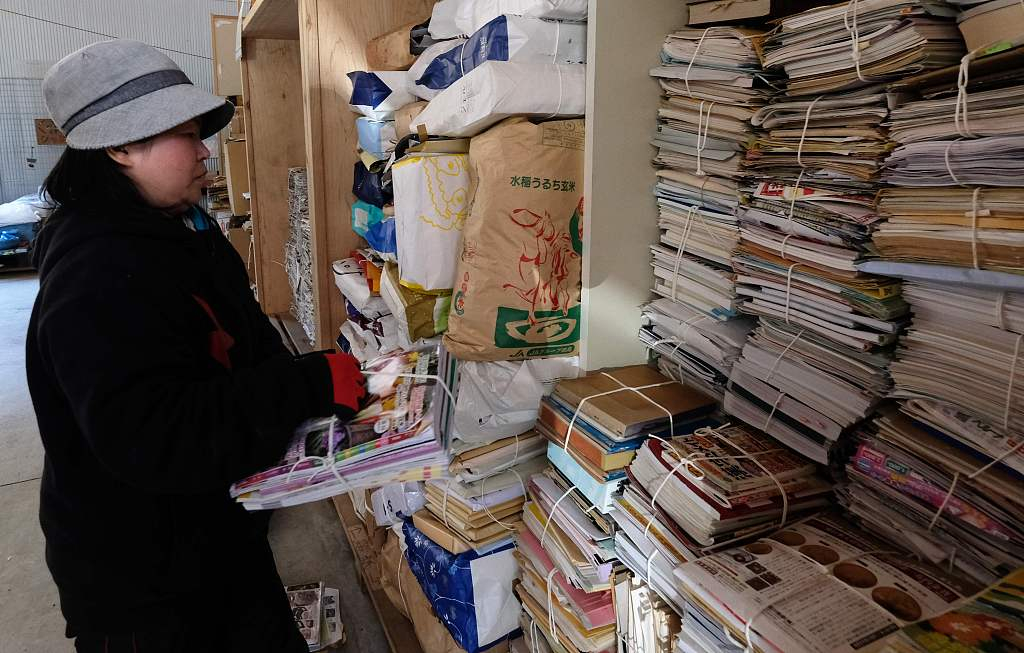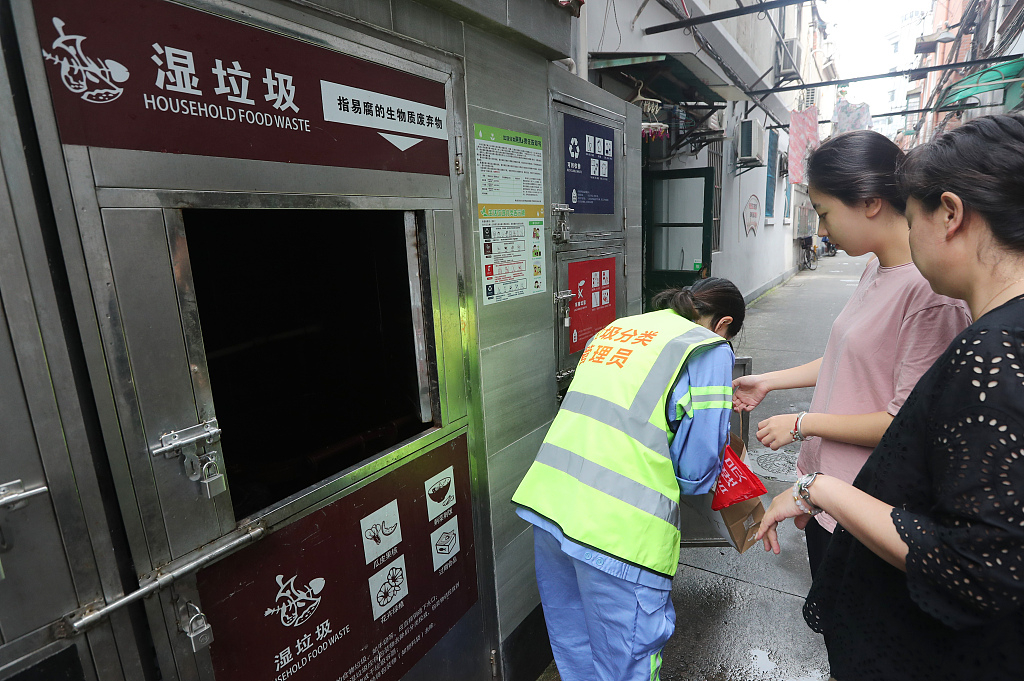

Plastic, cans, glass, papers, one would think that sorting trash into the above four categories is good enough. But in Japan, that comes a fine and a red sticker of shame.
Due to geographical constraint, Japan does not have enough space for landfills. Incineration is too costly to be promoted at a national scale. In a bid to promote recycling and reduce waste, some cities in Japan have raised the number of trash categories to as high as 34.
Despite the dizzying amount of trash categories, garbage sorting in Japan is widely practiced and is regarded as a civic duty. Though the law stipulates that those who repeatedly violate the trash sorting rule may be fined, in reality, the red stickers of shame are used more widely to nudge people's behavior towards compliance.

A poster that explains how garbage is sorted in Japan. /VCG Photo
Garbage sorting in Japan is carried out at a municipal level. Different cities and towns have different rules for garbage sorting. In general, trash is sorted into broad categories including cloth, paper, cardboard, etc. but when sorting specific items, there are also more detailed instructions to follow.
For example, when throwing away plastic bottles, bottle caps and labels must be removed before throwing them into the recycling bin. Milk cartons, on the other hand, must be rinsed with water, cut open and dried.
Throwing away big items in Japan requires the most amount of efforts. One must buy a permit at the local stores before discarding big items like a refrigerator or television. Many prefer to sell them to second-hand dealers so that they would come to fetch the discarded big-ticket items from home, even when they offer no payment, Han Ying, a Chinese national who has been living in Tokyo for more than six years, told CGTN.
"Garbage sorting has become part of the social norm to the extent that no one questions why one follows it anymore," she added.

A worker sorting newspapers and magazines for recycling at a waste center in the town of Kamikatsu, Japan. /VCG Photo
In comparison, Shanghai, the first city in China to adopt city-wide garbage sorting, is still facing pushback from residents unaccustomed to the new rule.
Yangzom, a resident of Shanghai told CGTN that the biggest problem she experienced is with the specific timing designated for throwing trashing. At her residential community in Shanghai, residents are allowed to throw their trash from 7 a.m. to 10 a.m. and from 4 p.m. to 7 p.m. Throwing trash during other non-designated times might incur a fine.
"Sometimes I would sneak out in the middle of the night to throw trash, when I am too busy to do it during the day," she said.
The other most commonly heard complaint is on the complexity of the garbage sorting rule. In Shanghai, residents are required to sort their household trash into four broad categories, including food waste, recyclables, hazardous wastes and residual wastes.
Given that the new sorting rule disrupts people's old habit of waste disposal – throwing away trash at no given time and no given space – it is common to see residents feeling overwhelmed by the new rule, said Jiang Jianguo, professor at Department of Environmental Science & Engineering at Tsinghua University, to CGTN.

A volunteer sifts through the trash to check if it is sorted properly. /VCG Photo
This is why education and supervision are needed to enforce the rule, he added. For example, 30,000 volunteers were deployed in trash collection points in Shanghai to supervise and educate the residents on the proper way of garbage sorting.
"I often times just take my solid trash down to the garbage sorting centers and let the volunteer help me sift through the trash to identify the recyclables," Yangzom, a Shanghai resident said.
This is not the first time that China tried garbage sorting. In the 2000s, a few pilot regions implemented garbage sorting at a small scale, but backtracked it later because few followed the non-mandatory rule.
But the city-wide garbage sorting system that Shanghai is promoting now is different, Jiang told CGTN. Not only is garbage sorting a law in Shanghai, how waste is disposed after being sorted will also change accordingly.

Automated smart garbage bins are installed in Shanghai to promote garbage sorting. /VCG Photo
Shanghai is already trying a combined approach to waste disposal, burning combustibles to generate electricity, while sending the incombustibles to landfill. Food waste, on the other hand, can be turned into fertilizer after fermentation, though the full infrastructure of treating food waste has not been fully established in Shanghai yet, according to Jiang.
Shanghai aims to push up the city's residual waste incineration and wet waste treatment rates up to 80 percent of the city's total garbage. China vows to reach the goal of 35 percent recycling in 46 cities by 2020.
"Japan's experience told us that it takes time to have a city-wide garbage sorting system," Han, the long-term resident of Tokyo concluded, "a short-term pain is probably inevitable."

Copyright © 2018 CGTN. Beijing ICP prepared NO.16065310-3
Copyright © 2018 CGTN. Beijing ICP prepared NO.16065310-3